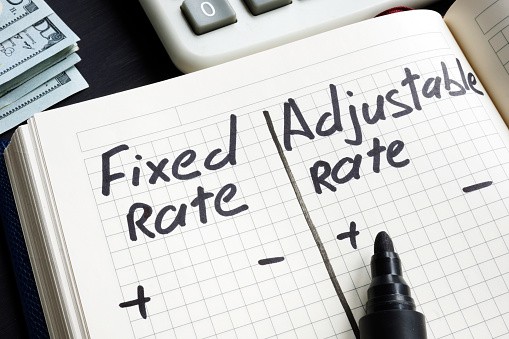
If you’re thinking about purchasing or refinancing a home, you may have heard the term qualified mortgage. A qualified mortgage is a term coined by the CFPB that represents a full documentation loan with a debt-to-income ratio of 43%. Generally, most loans fit this category even though they sometimes allow debt to income ratio as high as 56%. Here is what to know…
There is also a large market for what are called non-QM loans meaning non-qualified mortgage loans, and these represent loans that are not full documentation loans, or they are but are considered to be jumbo loans. Unfortunately, it’s not black-and-white and there are different loan types that mirror each other, but still fall into the non-qualified mortgage loan category. These long types include jumbo loans, bank statement loans, and DSCR loans.All of these loans fall into the non-QM mortgage loan territory and subsequently, the margins on these loans the lenders generally make since they’re not government-backed are far less.
Jumbo mortgages are loans visa greater than a 43% debt-to-income ratio and are larger than the maximum high dollar loan limit designated by Fannie Mae and Freddie Mac in the area and county in which are desiring to purchase or refinance a home. Generally jumbo mortgages will go up to several million dollars, but also require heavy credit requirements. Meaning excellent credit scores think 740 and above, a big down payment generally speaking, but not always usually 20% down, although sometimes depending on the investor as little as 10%, and a debt-to-income ratio generally around 43%, but some even will go as high as 50%. These loans depending on your credit risks i.e. less than a 700-credit score, less down payment, etc. might result in higher interest rates than what you might be seeing or hearing about on the internet.
Bank statement loans- These are loans for self-employed families who make good money but don’t report the income on their tax return as they’re trying to limit their tax exposure. Well, when you do this as a self-employed borrower, you pay a lot less than taxes however, when it comes to qualifying for a traditional loan through say, Fannie Mae or Freddie Mac, often times there becomes a challenge because you’re not reporting income, which means you fall into a different category i.e. the non-QM loan, a.k.a. bank statement loan. As a result, you’re going to need a minimum of 20% down. You generally need to have at least a 680-credit score or higher. However, while these requirements are in place, you also have to remember this is a type of loan that essentially is looking the other way on your tax return, and as a result, the lender has significant risk on that loan, and that risk is built in via a premium meaning, a higher interest rate and yes, paying discount points. Is it realistic that you might be paying anywhere from 8.5 to 9.5% for a 30-year fixed-rate mortgage with one to two points in cost pricey, yes.
DSCR loans debt service collateralized loans are for rental property loans only. These loan types are even more out-of-the-box than the bank statement known as they only rely on the revenue of the property to qualify. For a rental property owner, you don’t need to show any income from paystubs or tax returns, or bank statements it’s just about the revenue the property generates via 1007 from the appraisal report or the rental property agreement, or the lease agreement. It’s about the gross revenue and as long as the gross revenue is equal to the mortgage payment generally speaking, you’ll be able to get a loan like this however, the same thing is going to apply because of that inherent risk the lender takes on it’s realistic to expect to pay quite a bit more in points and fees same idea as the bank statement loan 8.5 to 9.5 range on a 30 year fixed paying 2 to 3 points.
So the question becomes should you get a non-qm loan or go with a private money loan like a hard money loan? Well, generally speaking, hard money loans are expensive far more than the options were talking about in this illustration. Hard money loans generally around 11% = paying several points and they also have a balloon that’s due and it is not a true 30-year fixed-rate mortgage. It might be amortized over 30 years to show a 30-year payment, but the loan is due and payable saying 2 to 5 years. It’s a short-term loan and it doesn’t really fix the situation whereas the loans were discussing above are all true fully amortizing 30 are fixed-rate mortgages that do not contain prepayment penalties, do not contain, graduated, payments, and do not contain Anything that causes a force to change to your payment in the future the way, a hard money loan does. Another nice benefit of these types of loans the bank statement loan, the non-QM loan, and the debt service collateralized loan is that they report on your credit report which will help your credit score whereas a hard money loan generally does not report, which means you generally don’t get any improved credit score enhancement as a result.
If you have a unique situation and want to see what can you qualify for get a no cost quote today!
- SEO Powered Content & PR Distribution. Get Amplified Today.
- PlatoData.Network Vertical Generative Ai. Empower Yourself. Access Here.
- PlatoAiStream. Web3 Intelligence. Knowledge Amplified. Access Here.
- PlatoESG. Automotive / EVs, Carbon, CleanTech, Energy, Environment, Solar, Waste Management. Access Here.
- BlockOffsets. Modernizing Environmental Offset Ownership. Access Here.
- Source: https://sonomacountymortgages.com/2023/07/non-qm-loan-type-cost-more-why/



